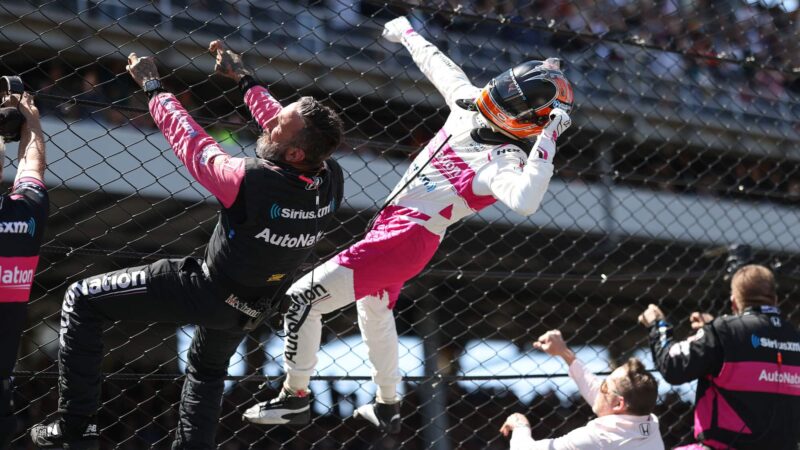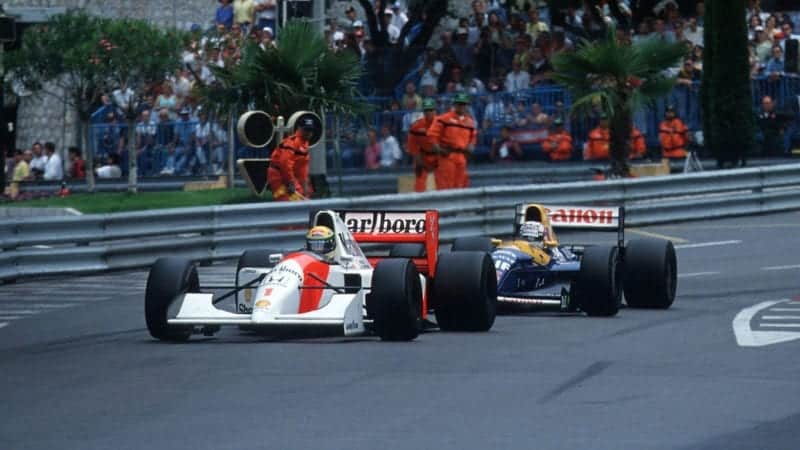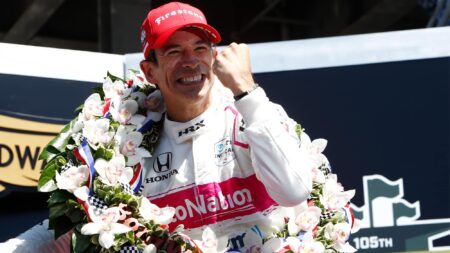This year, almost from the start, drivers were in fuel-save mode, which discouraged overtaking and led to a lot of dull follow-the-leader ‘action’. But whereas this sort languorous activity is par for the course at Monaco, it’s usually the prelude to a fast-and-furious finish at Indy.
“I love the tension through the race and how much you have to let the animal inside of you come out in the last 20 laps,” podium-finisher Simon Pagenaud said afterward. “It’s a feel I’ve never had on any other racetracks – that fight at the end. Being in it, even though I was third, I could smell the blood. I’ll tell you what, it’s the best feeling in racing.”
During the past decade, nearly every Indy 500 has been a nail-biter. Two years ago, Pagenaud took the lead for good with one-and-a-half laps to go. In 2017, Takuma Sato swept into first place on Lap 195 (of 200). In 2015, it was Juan Pablo Montoya on Lap 197. The year before that, Lap 197 was also the turning point for Ryan Hunter-Reay. In 2013, Tony Kanaan claimed the lead on Lap 198.

Experience told for Castroneves, as he passed Palou for the lead at just the right time, with still enough left in the tank to climb the fence afterwards
IMS
But all of these finishes were also-rans compared to 2012, when Dario Franchitti passed Scott Dixon on Lap 199, then barely survived when Sato crashed while trying to dive underneath him past in Turn 1 on the last lap. And 2012 comes up short compared with 2011, when poor J.R. Hildebrand wrecked on the final turn of the race, gifting Dan Wheldon with the victory.
Meanwhile, what does Monaco have to offer in the way of dramatic finishes in recent years? Fans will reflexively cue up the video of Nigel Mansell making up five seconds in two in-candescent laps on Ayrton Senna at the end of the Grand Prix in 1992. Thrilling stuff, right? But what happened after Mansell caught Senna? Uh, nothing. Despite being scads faster than Senna, Mansell couldn’t even make a legitimate attempt at barging past. If that’s racing, then I’m the ghost of Jean-Pierre Beltoise. (Full disclosure: I’m not the ghost of Jean-Pierre Beltoise.)



